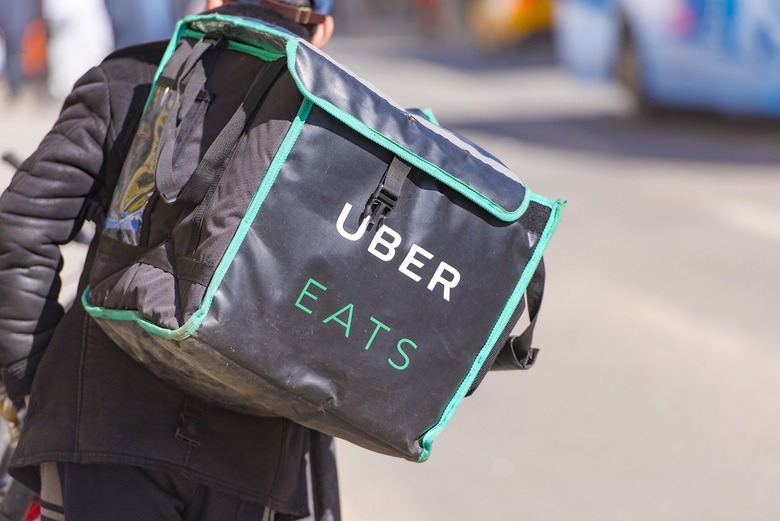Uber Eats Expects To Deliver $10 Billion Worth Of Food This Year
Uber was created 10 years ago to make ridesharing and cab hailing a breeze for people in major cities. Now you can catch a lift practically anywhere and even have a driver (or drone) deliver you something to eat from a five-star restaurant — or McDonald's and Starbucks. Food delivery may have been an afterthought at the time of the transit company's conception, but now Uber Eats is one of the most successful services in the business.
10 Ways to Get Same-Day Groceries Delivered
The San Francisco-based company now projects it will deliver $10 billion worth of food around the world this year, which is over $6 billion more than last year. Uber Eats — which debuted in Toronto in 2015 — ranks second to market leader Grubhub (the same company as Seamless) and above Postmates, DoorDash and Caviar, according to Forbes.
"When I first joined Uber, I think Uber was much more associated with ride-hailing and Eats was this interesting part-time endeavor," Uber CEO Dara Khosrowshahi told the outlet. "It has since exploded, in a good way, into a truly significant business."
Uber Eats wasn't always Uber Eats, though. In 2014, the platform launched in Santa Monica, California, under the name UberFresh, which delivered lunch and dinner from select restaurants in just 10 minutes. Year later, executives realized people would be willing to wait longer if they could order food from a wider selection of restaurants. So in 2015, Uber Eats was officially born.
The success of Uber Eats and other food delivery services is due to the fact that Americans are spending ever increasing amounts on takeout. Large swaths of the population just don't have the time or energy to make home-cooked meals, and some even claim that millennials have killed the kitchen. According to data from investment bank UBS, that age group is three times as likely to order in than their parents. The organization even stated that "there could be a scenario where by 2030 most meals currently cooked at home are instead ordered online and delivered from either restaurants or central kitchens."
As a whole, Americans spend about $70,000 each on takeout and delivery per lifetime. Of 1,000 participants surveyed in research from late 2017, 82 percent admitted to ordering out at least once every two weeks. That's an estimated $100 cost every month, or $1,175 per year. We don't even want to know what our individual delivery debt looks like, because it's probably a lot more than that.
But we're no Post Malone. The 23-year-old Syracuse-born rapper is one of Postmates' most loyal customers, having spent $40,000 on nearly 3,000 items in 52 different cities across the U.S. Some of his favorite purchases are from fast food giants like Burger King, Chick-fil-Aand Popeyes, where he orders six biscuits, two five-piece tenders dinners, and a quarter-pound popcorn shrimp dinner. When he orders from Chick-fil-A, he asks for the "largest nugget tray they have." Mood. Some other munchies Post likes to have delivered are a small chocolate and vanilla ice cream sheet cake from Carvel, chicken tenders, fries, and mozzarella sticks from a restaurant called Big Daddy's, melatonin and garlic bread. Now that's living.
But for real, many of us don't have enough time in a day to spend an hour cooking dinner after work when all you want to do is chow down and relax. Plus, when that sushi or taco craving hits, it's nearly impossible to not give in. If you are a superhero with the willpower to avoid the temptations of takeout, try these 20-minute recipes that will change your life.
